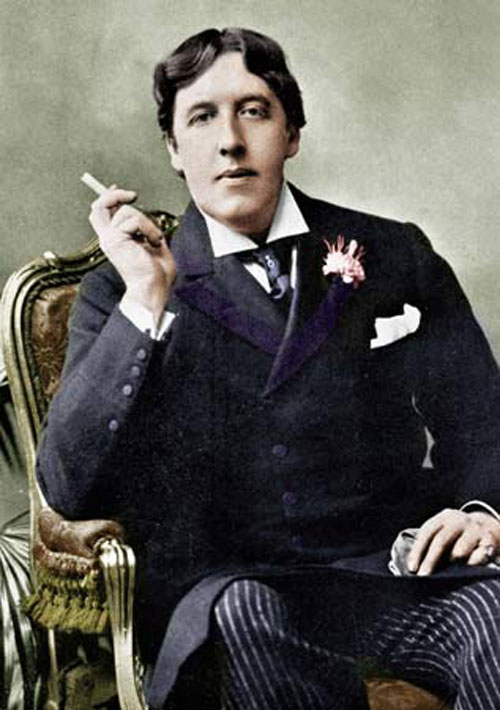
12 Jan TIO PARIS: OSCAR WILDE AT MUSEE D’ORSAY
 Apres le boeuf, la creme brulee.
Apres le boeuf, la creme brulee.
After the steak, dessert.
The Stein Collection for example versus the show at the Musee D’Orsay, “Beaute, morale et volupte dans L’Angleterre d’Oscar Wilde,” apologetically about sex and sizzle.
Oscar Wilde was an Anglo-Irish playwright, novelist, poet, and critic. As one of the greatest chroniclers of the Victorian Era, Wilde became the voice of the Aesthetic (or Arts & Crafts) Movement, which emphasized aesthetic values over moral and social themes, flesh and peacocks (or peacocks with pillowing flesh) over the ugly gray smoke of the Industrial Revolution.
From the 1860s to the last, decadent decade of Queen Victoria’s reign – she died in 1901 – the Aesthetic Movment, seen through emblematic works of Dante Gabriel Rossetti, Edward Burne-Jones, William Morris, James McNeill Whistler, Aubrey Beardsley and Wilde, created a fraternity of painters, poets, decorators, fashion designers, photographers, and architects, united in a quest to define an artistic style freed from the repressive Victorian morality. For inspiration, these artists turned to the East (recently opened China and Japan) and away from the growing materialism of the West. The Aesthetic Movement became a triumph of fantasy over cold facts. It was all about art for beauty’s sake versus art in the service of life.
Besides his literary feats of derring-do, Oscar Wilde is also famous – rather infamous – for his ribald wit, flamboyance, sartorial and otherwise, and affairs with men. In 1895, his trial and conviction for a homosexual relationship (then considered a crime) with the son of an aristocrat hurried the dusk of the Aesthetic Movement, low brow fun while it lasted.
To floss the sugar out of our teeth, my friend and I headed for the fifth floor of the Musee D’Orsay, which houses the institution’s heralded Impressionist and Post Impressionist collection, including monumental works by Monet, Manet, Degas, Renoir, Van Gogh and Cezanne. The Museum’s signature clock is also on that floor.
Late in the afternoon, views of Paris through the face of the clock made time stand still.



Sorry, the comment form is closed at this time.